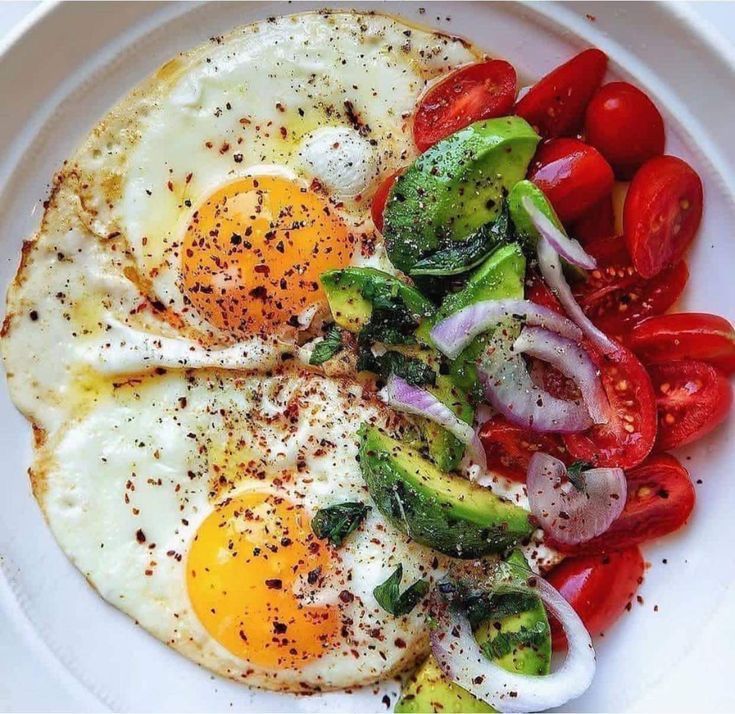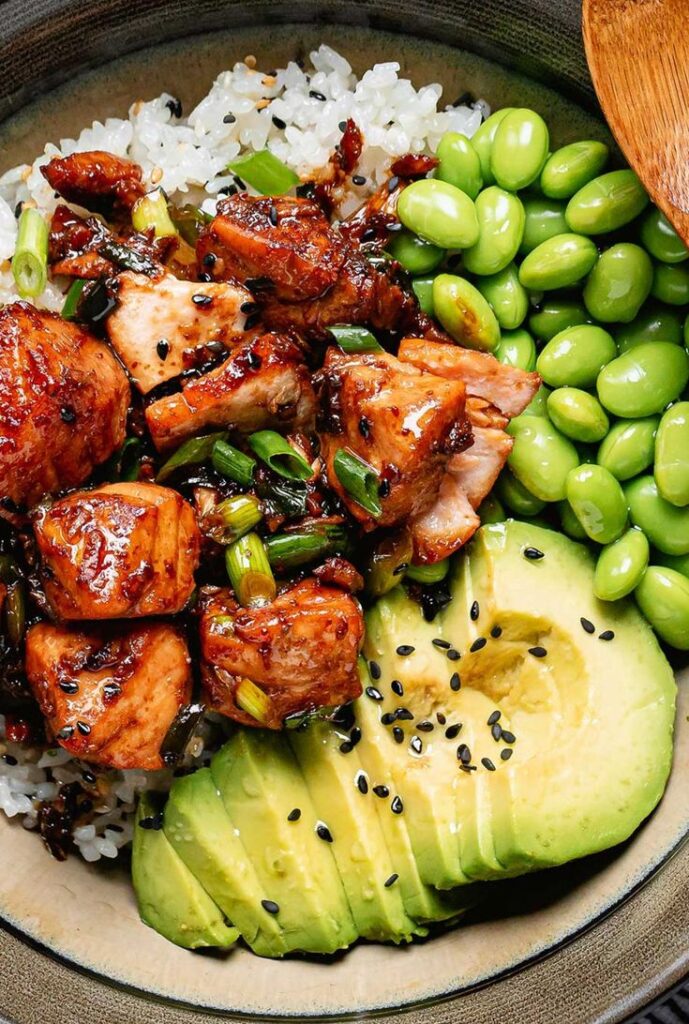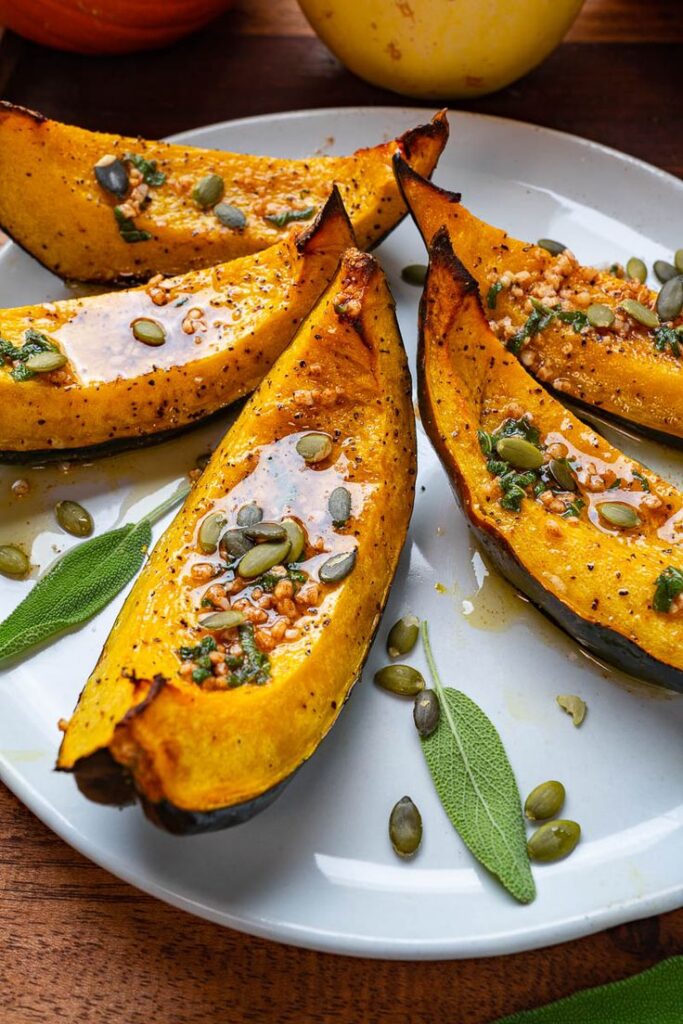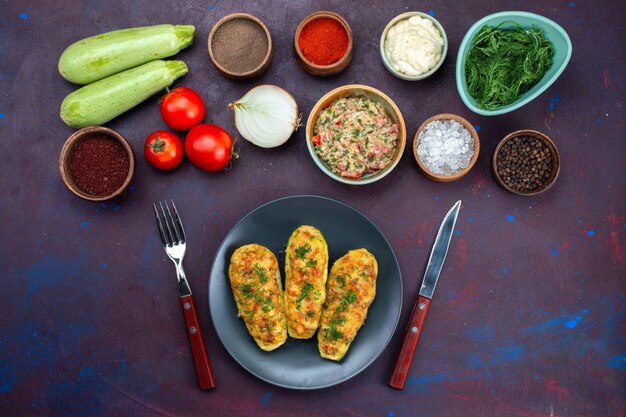Introduction
In recent years, plant-based diets have gained significant popularity, driven by an increasing awareness of their health benefits, environmental impact, and ethical considerations. Whether you’re looking to reduce your carbon footprint, improve your overall health, or simply experiment with new, exciting foods, adopting a plant-based lifestyle can be a rewarding experience. But one of the most common misconceptions is that plant-based eating requires complex recipes or exotic ingredients. In reality, there are plenty of easy plant-based recipes that can be enjoyed by anyone, regardless of their cooking skills.
This guide brings you 10 simple and delicious plant-based recipes for every meal of the day. From energizing breakfasts to hearty dinners and guilt-free desserts, these dishes are designed to be both nutritious and satisfying. Each recipe uses accessible ingredients that you can find at your local grocery store, making it easier than ever to embrace a plant-based lifestyle without feeling overwhelmed.
Whether you’re already a plant-based eater or just starting out, this collection of recipes is perfect for those who want to enjoy vibrant, flavorful meals that support your health and the planet. So, let’s dive into the wonderful world of plant-based cooking and discover how easy it can be to create meals that are both delicious and nourishing!
1. Breakfast: Start Your Day the Plant-Based Way

Breakfast is the most important meal of the day, setting the tone for your energy levels, mood, and overall well-being. Opting for plant-based breakfast options can provide you with a nutrient-dense start, filled with vitamins, minerals, and fiber that support your body’s needs throughout the morning. Whether you’re craving something sweet, savory, or filling, there’s a plant-based recipe for every palate.
Here are some simple and delicious plant-based breakfast recipes that you can enjoy, helping you fuel your day the plant-powered way:
i. Overnight Oats with Fresh Fruit and Chia Seeds
Overnight oats are a quick and easy plant-based breakfast option. Simply combine rolled oats with almond milk (or any plant-based milk) and a spoonful of chia seeds. Let it sit in the fridge overnight to absorb all the flavors and create a creamy texture. In the morning, top with fresh berries, banana slices, and a drizzle of maple syrup or honey for added sweetness. This meal is packed with fiber, healthy fats, and antioxidants to kickstart your day.
ii. Tofu Scramble with Vegetables
A plant-based twist on scrambled eggs, tofu scramble is a satisfying and protein-packed breakfast. Simply crumble firm tofu into a pan and sauté with onions, bell peppers, spinach, and mushrooms. Add turmeric, nutritional yeast, and black salt to give it that “eggy” flavor. This savory breakfast is a perfect choice for those craving a hearty and nutrient-rich start to their day.
iii. Avocado Toast with Tomato and Basil
For a light yet filling breakfast, avocado toast is always a winner. Spread mashed avocado on whole-grain toast and top with slices of ripe tomato and fresh basil. Sprinkle with a pinch of salt, pepper, and chili flakes for added flavor. This simple and satisfying breakfast offers healthy fats, fiber, and a burst of freshness from the tomatoes and basil.
iv. Smoothie Bowl with Mixed Berries and Granola
If you prefer a refreshing and nutrient-packed breakfast, a smoothie bowl is an excellent option. Blend your favorite fruits, such as banana, berries, and spinach, with a splash of almond milk. Pour into a bowl and top with granola, chia seeds, and a handful of nuts or seeds. This breakfast is rich in vitamins, antioxidants, and healthy fats, making it a great way to nourish your body first thing in the morning.
v. Chia Pudding with Coconut and Mango
Chia pudding is another overnight breakfast option that’s easy to prepare and customize. Combine chia seeds with coconut milk, a dash of vanilla extract, and maple syrup, then let it sit in the fridge overnight. In the morning, top with fresh mango slices, coconut flakes, and a sprinkle of cinnamon for a tropical-inspired breakfast. Packed with omega-3s, fiber, and antioxidants, this pudding provides long-lasting energy throughout the day.
These easy plant-based breakfast recipes will not only leave you feeling full and energized but will also ensure that you’re getting a healthy dose of essential nutrients to fuel your body. Plus, they’re simple enough to prepare, even on busy mornings, so you can stick to your plant-based goals without hassle.
By starting your day the plant-based way, you’ll set a positive tone for healthy eating and conscious living.
2. Explore Lunch: Energizing and Satisfying Midday Meals

Lunch is a crucial meal in your day, offering an opportunity to refuel your body and recharge for the rest of your activities. When choosing plant-based options for lunch, it’s important to focus on meals that are not only nutritious but also satisfying and energizing. Plant-based lunches can be filled with protein, healthy fats, and fiber, helping to keep you full and focused throughout the afternoon.
Here are some easy and delicious plant-based lunch recipes that will fuel your body and delight your taste buds:
i. Chickpea Salad Wraps
Chickpea salad wraps are a quick and flavorful option for a plant-based lunch. Simply mash chickpeas with avocado, lemon juice, olive oil, and your favorite herbs and spices. You can also add finely chopped celery, onions, or cucumber for a satisfying crunch. Spoon the mixture into a whole-grain wrap, add fresh greens like spinach or lettuce, and wrap it up for a delicious, portable meal. This wrap is rich in protein, healthy fats, and fiber, making it an excellent midday meal.
ii. Vegan Buddha Bowl
A vegan Buddha bowl is a balanced, vibrant meal that’s as satisfying as it is nutritious. Start with a base of quinoa or brown rice, and add your choice of roasted or raw vegetables like sweet potatoes, kale, chickpeas, and broccoli. Top with avocado, a drizzle of tahini, and a sprinkle of sesame seeds. Buddha bowls are customizable, so you can add whatever ingredients you have on hand. They are loaded with plant-based proteins, fiber, and healthy fats, making them a perfect option for a nourishing and energizing lunch.
iii. Lentil Soup
A hearty lentil soup is an excellent plant-based lunch option, especially for those who crave a warm and comforting meal. Cook lentils with onions, carrots, celery, and garlic, and season with herbs like thyme, rosemary, and bay leaves. Add vegetable broth and let it simmer until the lentils are tender. This soup is rich in protein, iron, and fiber, providing a satisfying and filling meal that will keep you energized throughout the afternoon.
iv. Quinoa and Black Bean Salad
A refreshing and protein-packed salad, quinoa and black bean salad combines two nutrient-rich ingredients for a filling meal. Toss cooked quinoa with black beans, diced bell peppers, red onions, and corn. Add a handful of cilantro and lime juice for a zesty flavor boost. This salad is rich in plant-based protein, fiber, and vitamins, providing a light yet satisfying option for lunch.
v. Vegan Veggie Burger
If you’re craving something tasty and satisfying, try a homemade or store-bought vegan veggie burger. Made from a combination of beans, grains, and vegetables like black beans, sweet potatoes, or chickpeas, these veggie burgers can be easily customized with your favorite toppings. Serve it on a whole-grain bun with lettuce, tomato, avocado, and a smear of mustard or hummus. These burgers are packed with protein and fiber, keeping you full and satisfied until your next meal.
These plant-based lunch recipes provide the perfect balance of flavor and nutrition, ensuring that you’re energized and ready to take on the rest of your day. By incorporating nutrient-dense, plant-powered meals into your lunchtime routine, you’ll fuel your body with the essential nutrients it needs, while enjoying delicious and satisfying flavors.
Plant-based lunches are versatile, so whether you prefer something light and refreshing or hearty and filling, there’s a plant-based option that will keep you nourished and satisfied.
3. Explore Dinner: Hearty and Flavorful Plant-Based Dinners

After a long day, nothing beats a hearty, flavorful dinner that not only satisfies your hunger but also nourishes your body. When choosing plant-based dinner options, it’s essential to focus on meals that are both filling and packed with essential nutrients. A plant-based dinner can be just as comforting and satisfying as its traditional counterparts, offering a variety of flavors, textures, and ingredients that will leave you feeling energized and content.
Here are some easy and delicious plant-based dinner recipes to enjoy at the end of your day:
i. Vegan Mushroom Stroganoff
If you’re craving a rich and creamy dinner, a vegan mushroom stroganoff is the perfect choice. This dish features earthy mushrooms in a creamy sauce made from cashews, vegetable broth, and nutritional yeast. Serve it over pasta or quinoa for a hearty and satisfying meal. The mushrooms provide a deep, umami flavor, while the cashew cream adds richness without any dairy. This dish is comforting, filling, and packed with plant-based protein.
ii. Sweet Potato and Black Bean Chili
This hearty and warming chili is an ideal plant-based dinner for colder months. Sweet potatoes and black beans create a robust base, while a blend of spices like chili powder, cumin, and paprika adds depth and heat. Simmered together with tomatoes and vegetable broth, this chili is rich in fiber, antioxidants, and plant-based protein. Top it with avocado, cilantro, and a squeeze of lime for added freshness. It’s a complete meal that’s both filling and satisfying.
iii. Stuffed Acorn Squash
For a seasonal and nutrient-packed dinner, stuffed acorn squash is a must-try. Roasted acorn squash is filled with a mixture of quinoa, cranberries, nuts (like pecans or walnuts), and sautéed vegetables such as onions, spinach, and garlic. The natural sweetness of the squash pairs perfectly with the savory stuffing, creating a balanced and delicious dinner. This dish is full of fiber, vitamins, and healthy fats, making it a great option for a nourishing evening meal.
iv. Vegan Buddha Bowl with Tahini Dressing
A vegan Buddha bowl is a versatile dinner option that can be customized to your taste. Start with a base of brown rice, quinoa, or farro, and add a variety of roasted or fresh vegetables such as sweet potatoes, cauliflower, kale, and carrots. For protein, you can add chickpeas, tempeh, or tofu. Drizzle the bowl with a creamy tahini dressing or a lemon-tahini sauce for an extra burst of flavor. This well-rounded meal is nutrient-dense, providing fiber, protein, and healthy fats.
v. Lentil and Vegetable Shepherd’s Pie
This plant-based twist on the classic shepherd’s pie is both hearty and comforting. A base of lentils, mushrooms, and carrots is simmered in a savory vegetable broth and then topped with mashed potatoes. The creamy mashed potatoes are the perfect topping to this rich and flavorful filling, making it a satisfying and nourishing dinner. Lentils provide a great source of plant-based protein, while the vegetables offer an array of vitamins and minerals.
vi. Vegan Tacos with Tempeh and Avocado
For a quick and flavorful dinner, vegan tacos are a great option. Use crumbled tempeh as a meat substitute, seasoning it with cumin, chili powder, and garlic for an authentic taco flavor. Load your tacos with your favorite toppings such as fresh avocado, shredded lettuce, diced tomatoes, cilantro, and a squeeze of lime. Serve on soft corn tortillas for a light but satisfying meal. These tacos are rich in protein, healthy fats, and fiber, making them a perfect plant-based dinner choice.
vii. Stir-Fry Tofu with Vegetables
A stir-fry tofu is a simple yet delicious dinner that can be prepared in under 30 minutes. Stir-fry tofu cubes in a wok or skillet with a variety of colorful vegetables such as bell peppers, broccoli, carrots, and snow peas. Add a soy-based sauce, garlic, and ginger for flavor, and serve over brown rice or noodles. This dish is high in plant-based protein from the tofu and loaded with vitamins and minerals from the vegetables, making it a nutritious and quick dinner option.
These plant-based dinner recipes are packed with flavor and nutrients, proving that plant-based meals can be both filling and satisfying. Whether you’re in the mood for a cozy, comforting dish or a fresh, vibrant bowl, these recipes offer something for everyone. With the right combination of ingredients, you can create a dinner that not only nourishes your body but also delights your taste buds.
By incorporating plant-based dinners into your routine, you’ll be nourishing your body with wholesome, nutrient-dense foods that promote health and well-being. Each of these easy-to-make meals offers a satisfying and flavorful way to end your day, without compromising on taste or nutrition.
4.Explore Snacks and Sides: Light and Wholesome Plant-Based Bites

When it comes to maintaining a plant-based lifestyle, snacks and sides play a crucial role in keeping you energized and satisfied throughout the day. Whether you’re looking for a quick bite between meals or a side dish to complement your main course, plant-based options are both delicious and nutritious. From crunchy veggies to savory dips, plant-based snacks and sides are packed with flavor and nutrients, offering an ideal balance of fiber, healthy fats, and protein.
Here are some light and wholesome plant-based snack and side ideas to keep you fueled and satisfied:
i. Hummus and Veggie Sticks
One of the easiest and most satisfying plant-based snacks, hummus pairs perfectly with fresh vegetables like carrots, cucumber, celery, and bell peppers. The creamy texture of hummus, made from blended chickpeas, tahini, lemon juice, and garlic, is rich in protein, healthy fats, and fiber. This simple snack is a great way to get a serving of veggies while also indulging in a flavorful, nutrient-packed dip. For an extra kick, try adding some paprika or cumin to your hummus for a spicy twist.
ii. Avocado Toast with Cherry Tomatoes
Avocado toast is a classic plant-based snack that never goes out of style. Spread a ripe avocado on whole-grain toast and top with a handful of halved cherry tomatoes, a sprinkle of sea salt, and freshly ground black pepper. You can also add a drizzle of olive oil and a dash of red pepper flakes for an added burst of flavor. This simple yet satisfying snack is loaded with healthy fats from the avocado, fiber from the bread, and vitamin C from the tomatoes.
iii. Roasted Chickpeas
For a crunchy and high-protein snack, roasted chickpeas are a fantastic option. Simply toss chickpeas with olive oil, your favorite spices (such as paprika, garlic powder, or cumin), and roast them in the oven until crispy. The result is a snack that’s both crunchy and satisfying, packed with protein, fiber, and a variety of nutrients. Roasted chickpeas are a great alternative to chips or other processed snacks, providing a healthy option for your midday cravings.
iv. Sweet Potato Fries
Craving something crispy and savory? Try making sweet potato fries! Slice sweet potatoes into thin strips, toss them with olive oil, salt, and pepper, and bake until golden and crispy. Sweet potatoes are a fantastic source of vitamins A and C, as well as fiber. This side dish is a great alternative to regular fries and offers a healthy, plant-based way to enjoy a crunchy snack. For a twist, you can season them with chili powder or smoked paprika for an added layer of flavor.
v. Vegan Stuffed Mini Bell Peppers
Vegan stuffed mini bell peppers are a colorful and delicious snack or side dish that’s easy to prepare. Cut mini bell peppers in half and stuff them with a mixture of quinoa, black beans, corn, diced tomatoes, and avocado. The combination of fresh ingredients provides a satisfying crunch and a burst of flavor, while the quinoa and black beans offer plant-based protein and fiber. These stuffed peppers are not only vibrant and appealing but also packed with nutrients, making them a great addition to any plant-based meal.
vi. Guacamole and Whole Wheat Crackers
Guacamole is another creamy, nutrient-dense snack that pairs beautifully with whole wheat crackers. Made with mashed avocado, lime juice, cilantro, and a hint of jalapeño, guacamole is rich in healthy fats, fiber, and antioxidants. Serving it with whole wheat crackers provides additional fiber, helping to keep you full and satisfied. This combination is a perfect option for a light snack that’s both filling and delicious.
vii. Kale Chips
If you’re craving something crispy and savory, kale chips are a healthy alternative to traditional chips. Simply tear kale leaves into bite-sized pieces, toss them with olive oil and seasonings like sea salt and garlic powder, and bake until crispy. Kale is an excellent source of vitamins A, C, and K, along with fiber and antioxidants. Kale chips are low in calories but high in nutrients, making them a perfect plant-based snack for any time of day.
viii. Cucumber and Guacamole Bites
For a refreshing and low-calorie plant-based snack, cucumber and guacamole bites are an ideal choice. Slice cucumber into rounds and top each slice with a dollop of homemade guacamole. The freshness of the cucumber pairs beautifully with the creamy and zesty guacamole, offering a satisfying and light snack that’s perfect for warm weather or as an appetizer for your next gathering.
ix. Vegan Caesar Salad
If you’re looking for a side dish to complement your main plant-based meal, a vegan Caesar salad is a fantastic option. Toss romaine lettuce with a homemade vegan Caesar dressing made from cashews, lemon juice, garlic, Dijon mustard, and nutritional yeast for a creamy and tangy flavor. Add in crunchy croutons and a sprinkle of plant-based Parmesan to complete the salad. This plant-based take on a classic Caesar is rich in flavor and provides a generous serving of fiber and vitamins.
x. Fruit Salad with Lime and Mint
For a refreshing and light plant-based side or snack, a fruit salad is a great option. Combine seasonal fruits like berries, melons, citrus, and kiwi for a colorful mix. Add a squeeze of fresh lime juice and a handful of mint leaves for a burst of freshness. This fruit salad is naturally sweet, packed with vitamins, and a great way to satisfy your sweet tooth in a healthy, plant-based way.
Plant-based snacks and sides are not only light and wholesome but also offer a wealth of nutrients to keep you feeling your best. Whether you’re looking for a quick bite to fuel your afternoon or a flavorful side to round out your meal, these plant-based options are the perfect choice. By incorporating more plant-based bites into your diet, you’ll be nourishing your body with wholesome ingredients that are as delicious as they are nutritious
5. Explore Desserts: Indulge in Sweet Plant-Based Treats

Indulging in a sweet treat doesn’t have to mean compromising on health or your plant-based lifestyle. There’s a wide variety of plant-based desserts that are as delicious as they are satisfying. These desserts are made with whole, nourishing ingredients that not only fulfill your sweet cravings but also provide essential nutrients. Whether you’re in the mood for something creamy, fruity, or chocolatey, there’s a plant-based dessert to suit every taste.
Here are some delicious and easy plant-based desserts you can enjoy any time of day:
i. Vegan Chocolate Avocado Mousse
If you’re craving something rich and indulgent, a vegan chocolate avocado mousse is the perfect choice. The creamy texture of avocado creates a silky smooth mousse, while cocoa powder and a touch of maple syrup bring in the sweet, chocolaty goodness. This dessert is packed with healthy fats, antioxidants, and fiber from the avocado, making it a nutritious yet decadent option. Simply blend ripe avocados with cocoa powder, sweetener, and a splash of vanilla extract for a treat that’s both indulgent and guilt-free.
ii. Coconut Milk Chia Pudding
Chia pudding is a wonderful plant-based dessert that is both nutritious and customizable. Made with chia seeds, coconut milk, and a touch of sweetener, this dessert is packed with omega-3 fatty acids, fiber, and plant-based protein. To make it extra indulgent, you can top your chia pudding with fresh fruits like berries, mangoes, or coconut flakes. This easy-to-make dessert can be prepped ahead of time, making it a perfect go-to option for a quick and healthy sweet treat.
iii. Baked Cinnamon Apples with Oat Crumble
For a warm and comforting dessert, try baked cinnamon apples with an oat crumble topping. Sliced apples are mixed with cinnamon and baked until tender, then topped with a crunchy oat and almond crumble for added texture. This dessert is naturally sweetened by the apples, and you can add a drizzle of maple syrup or coconut nectar for an extra touch of sweetness. It’s a cozy, heartwarming dessert that’s both plant-based and packed with antioxidants.
iv. Vegan Lemon Bars
If you’re a fan of tangy and sweet treats, vegan lemon bars are an excellent choice. These bars are made with a buttery, plant-based shortbread crust and a tangy lemon filling made from lemon juice, coconut milk, and cornstarch. The result is a melt-in-your-mouth dessert with the perfect balance of tartness and sweetness. Top them with powdered sugar or a dusting of lemon zest for a refined finish. These lemon bars are a refreshing, plant-based alternative to traditional lemon bars that are equally delicious and satisfying.
v. Plant-Based Strawberry Shortcake
A classic favorite reimagined, plant-based strawberry shortcake is a light and refreshing dessert that’s perfect for summer or any time of year. The plant-based version of this treat uses coconut cream or whipped almond cream instead of dairy, and the sponge cake is made with dairy-free milk and egg replacements like applesauce or flax eggs. Layer fresh strawberries with the whipped cream and light, airy cake for a dessert that’s as visually stunning as it is tasty. This dessert is packed with antioxidants from the strawberries and can be customized to suit your personal taste.
vi. Vegan Coconut Macaroons
For a simple yet satisfying sweet treat, vegan coconut macaroons are a great option. Made with shredded coconut, aquafaba (chickpea brine), and a sweetener like maple syrup, these chewy macaroons are both gluten-free and dairy-free. Their rich coconut flavor combined with a slight caramelized exterior makes them the perfect treat for coconut lovers. They are easy to make, bake in just a few minutes, and store well, making them a convenient and tasty snack to enjoy anytime.
vii. Plant-Based Banana Bread
Banana bread is a timeless dessert, and it’s incredibly easy to make plant-based! Vegan banana bread replaces the eggs and dairy with plant-based ingredients like almond milk, flax seeds, or applesauce. The bananas add natural sweetness, moisture, and flavor, while cinnamon and vanilla extract enhance the overall taste. You can add mix-ins like walnuts, chocolate chips, or dried fruit to make it even more exciting. This moist, delicious banana bread is perfect for breakfast or dessert and is a crowd-pleaser that can be enjoyed by everyone.
viii. Vegan Ice Cream
Who says you can’t have ice cream on a plant-based diet? Making your own vegan ice cream is easier than you might think, and it’s a much healthier option than store-bought varieties. You can create a smooth and creamy base using coconut milk, almond milk, or cashew cream, then blend in your favorite flavorings like vanilla, cocoa powder, or fruit. For added sweetness, try dates or maple syrup. Vegan ice cream can be customized to suit every craving, whether you’re in the mood for fruity sorbet or indulgent chocolate fudge.
ix. Raw Vegan Chocolate Truffles
For a bite-sized treat that’s rich and decadent, raw vegan chocolate truffles are a perfect choice. Made with raw cacao powder, dates, nuts, and coconut, these truffles are packed with antioxidants, healthy fats, and a natural sweetness. Simply blend the ingredients together, roll them into balls, and coat them in shredded coconut or cocoa powder. These truffles are an easy, no-bake dessert that’s perfect for satisfying your sweet tooth while providing nourishing nutrients.
x. Plant-Based Apple Crumble
For a classic, cozy dessert, plant-based apple crumble hits the spot. Sliced apples are combined with cinnamon and a sprinkle of sugar, then topped with a buttery oat crumble made from plant-based butter, oats, and almond flour. The apples are naturally sweet, and the crumble topping provides the perfect crunch. Served warm with a scoop of vegan vanilla ice cream or coconut cream, this apple crumble is the ultimate comforting dessert that’s as wholesome as it is delicious.
6. Explore Quick Tips for Creating Easy Plant-Based Meals

Adopting a plant-based lifestyle doesn’t have to mean spending hours in the kitchen. With a few simple strategies, you can create easy plant-based meals that are both nutritious and delicious, without the stress of complicated recipes or ingredients. Whether you’re new to plant-based eating or a seasoned pro, these quick tips will help you streamline your cooking process and enjoy wholesome meals that nourish your body and satisfy your taste buds.
i. Embrace Simple Whole Foods
One of the easiest ways to create quick plant-based meals is by focusing on whole foods like fruits, vegetables, grains, legumes, nuts, and seeds. These ingredients are naturally packed with nutrients and can be prepared in various ways without much effort. For example, you can toss fresh vegetables in a salad, cook up a batch of quinoa, or roast sweet potatoes for a hearty base. Whole foods require minimal prep and provide the foundation for satisfying, nutrient-rich dishes.
ii. Meal Prep for the Week
Meal prepping is a game-changer when it comes to creating easy plant-based meals. Spend a few hours once or twice a week chopping vegetables, cooking grains (like rice, quinoa, or farro), and prepping beans or lentils. Store them in airtight containers in the fridge, and you’ll have ingredients ready to throw together a meal in minutes. You can create grain bowls, wraps, or salads using these prepped ingredients, adding simple seasonings and dressings for flavor.
iii. Stock Your Pantry with Plant-Based Staples
A well-stocked pantry is key to creating quick and easy plant-based meals on a whim. Keep staples like canned beans, lentils, canned tomatoes, nut butters, coconut milk, and whole grains readily available. These pantry items can be the base of many dishes. For example, canned beans can be added to soups or salads, while lentils cook quickly for a satisfying protein-packed meal. Having these essentials on hand ensures that you’ll never be far from a delicious plant-based meal.
iv. Use Pre-Chopped Veggies and Convenience Foods
When you’re short on time, don’t hesitate to take advantage of pre-chopped vegetables and other convenience plant-based foods. Many grocery stores now offer pre-chopped vegetables, frozen vegetables, pre-cooked grains, and plant-based protein options like tofu or tempeh that require little to no preparation. These time-saving items are great for putting meals together quickly, allowing you to whip up a stir-fry, salad, or bowl in no time.
v. One-Pot Meals for Simplicity
If you want to save time on both cooking and cleanup, one-pot meals are a must. These meals often require minimal effort—just toss everything into a pot and let it cook! One-pot dishes like soups, stews, and grain bowls can easily be customized to suit your preferences. Throw in your choice of grains, vegetables, legumes, and seasonings, and let them simmer together for a flavorful, easy meal. The best part is that you can make a large batch to enjoy for multiple meals throughout the week.
vi. Make Use of Plant-Based Freezer Staples
Freezing plant-based foods is another fantastic way to create easy, quick meals. Stock your freezer with items like frozen vegetables, plant-based patties, and pre-cooked grains. These items can easily be pulled out for a quick meal. For example, you can heat frozen vegetables and combine them with quinoa or pasta for a simple stir-fry or bowl. Plant-based burger patties can be grilled or pan-fried for a fast sandwich or wrap.
vii. Opt for Quick Stir-Fries and Salads
Stir-fries and salads are some of the quickest and most versatile plant-based meals you can make. Simply stir-fry your favorite vegetables with tofu or tempeh, add a tasty sauce, and serve it over rice or noodles. Similarly, salads can be prepared in minutes by combining leafy greens, beans, nuts, seeds, and vegetables, and topping them with a dressing or tahini sauce. Both options can be customized with whatever you have on hand, making them perfect for quick plant-based meals.
viii. Use Simple Dressings and Sauces to Elevate Flavors
While plant-based meals often rely on fresh ingredients, the right sauces and dressings can elevate a dish and take it to the next level. Consider making easy plant-based sauces like tahini dressing, peanut sauce, or lemon-tahini dressing to drizzle over bowls, salads, and roasted vegetables. These dressings can be made in a matter of minutes and add a burst of flavor to otherwise simple meals. Additionally, store-bought sauces like soy sauce or sriracha can also add a kick to your quick plant-based meals.
ix. Batch-Cook Plant-Based Proteins
Protein-rich foods like beans, lentils, tofu, and tempeh can be batch-cooked and stored in the fridge for quick access during the week. Cook a large batch of beans or lentils, or bake a batch of tofu, and then add them to salads, wraps, or bowls throughout the week. Batch cooking plant-based proteins makes it easy to add protein to any meal without spending extra time cooking it each day.
x. Keep It Simple with Simple Plates
You don’t need complex recipes to create delicious plant-based meals. Keep it simple with plant-based bowls or plates that combine grains, vegetables, and plant-based protein. For example, a bowl with quinoa, roasted vegetables, chickpeas, and a drizzle of olive oil and lemon juice can be a filling and satisfying meal. By keeping meals simple and focusing on quality, whole foods, you can enjoy quick plant-based meals without needing a recipe every time.
7. Explore Health Benefits of a Plant-Based Diet

Adopting a plant-based diet is not just a passing trend; it’s a lifestyle that offers a wide range of health benefits. As more individuals discover the positive impact of plant-based eating, the demand for plant-based meals continues to grow. Whether you are looking to improve your overall health, boost your energy, or support a sustainable lifestyle, a plant-based diet can be a transformative choice. Below, we explore the key health benefits of eating plant-based foods and how they contribute to a healthier life.
i. Supports Heart Health
A well-balanced plant-based diet is known to improve cardiovascular health by lowering the risk of heart disease. Plant-based foods such as fruits, vegetables, whole grains, nuts, and seeds are rich in heart-healthy nutrients like fiber, antioxidants, and healthy fats. Research has shown that plant-based diets can help lower blood pressure, reduce cholesterol levels, and improve blood vessel function. These factors contribute to a reduced risk of heart disease, stroke, and other cardiovascular conditions.
ii. Promotes Weight Loss and Healthy Weight Management
One of the key benefits of a plant-based diet is its potential to aid in weight management. Plant-based foods are typically lower in calories and high in fiber, which helps increase satiety and reduce overall calorie intake. Additionally, a plant-based diet encourages the consumption of whole, nutrient-dense foods rather than processed foods, which can contribute to weight gain. Studies show that individuals following a plant-based diet tend to have lower body mass indexes (BMIs) and are less likely to suffer from obesity.
iii. Improves Digestion
A plant-based diet is naturally high in fiber, which plays a crucial role in digestive health. Fiber helps to regulate bowel movements, promote healthy gut bacteria, and prevent digestive issues like constipation. High-fiber plant foods such as beans, lentils, whole grains, and vegetables are essential for maintaining a healthy digestive system. Fiber also helps to reduce the risk of colorectal cancer, a common digestive tract concern.
iv. Reduces Risk of Chronic Diseases
One of the most significant health benefits of a plant-based diet is its potential to prevent and manage chronic diseases. A diet rich in plant foods has been shown to reduce the risk of developing conditions like Type 2 diabetes, hypertension, and certain types of cancer. Plant-based foods are naturally low in unhealthy fats, refined sugars, and cholesterol, all of which contribute to the development of chronic diseases. By focusing on nutrient-dense whole foods, a plant-based diet can help keep the body healthy and disease-free.
v. Boosts Immune System Function
A plant-based diet is packed with immune-boosting nutrients like vitamins C and E, beta-carotene, and zinc. These nutrients help strengthen the body’s immune system, making it more effective at fighting off infections and illnesses. Antioxidants found in plant-based foods, such as berries, leafy greens, and nuts, help reduce oxidative stress and inflammation in the body, which can compromise immune function over time. Eating a variety of colorful fruits and vegetables ensures your body is receiving a broad spectrum of these immune-boosting compounds.
vi. Improves Skin Health
A plant-based diet can have a positive impact on skin health. Many plant foods are rich in antioxidants, vitamins, and minerals that support skin function and protect it from aging. For example, vitamins A, C, and E are vital for collagen production, which helps keep skin firm and smooth. The high water content in many fruits and vegetables helps keep the skin hydrated, while healthy fats from sources like avocados and nuts nourish the skin from the inside out. A plant-based diet can also help reduce inflammation, which is often associated with acne, eczema, and other skin conditions.
vii. Supports Healthy Aging
Plant-based diets are rich in anti-aging nutrients such as antioxidants, which protect cells from damage caused by free radicals. By reducing oxidative stress, a plant-based diet helps slow the aging process at the cellular level. Nutrient-dense foods like leafy greens, berries, nuts, and seeds contribute to maintaining brain function, reducing the appearance of wrinkles, and promoting healthy joints. Additionally, the anti-inflammatory properties of plant-based foods can help mitigate age-related conditions like arthritis and cognitive decline.
viii. Improves Mental Clarity and Mood
The benefits of a plant-based diet extend beyond physical health—it can also improve mental clarity and mood. A plant-based diet that includes plenty of whole grains, vegetables, and fruits can support brain health and cognitive function. Certain nutrients found in plant foods, such as omega-3 fatty acids, folate, and vitamin B6, are essential for brain function and neurotransmitter production, which affects mood and mental well-being. Studies found that a diet rich in fruits, vegetables, and whole grains can improve focus, reduce symptoms of depression, and even lower stress levels.
ix. Supports Sustainable and Eco-Friendly Living
Not only does a plant-based diet benefit individual health, but it also has a positive impact on the planet. By choosing plant-based foods, you’re reducing your carbon footprint and contributing to environmental sustainability. The plant-based food system requires fewer resources like water and land compared to animal agriculture, and it generates fewer greenhouse gases. For those interested in eco-friendly living, a plant-based diet aligns with a sustainable and ethical lifestyle that helps protect natural ecosystems.
x. Improves Energy Levels
Many people who switch to a plant-based diet report feeling more energized throughout the day. This can be attributed to the nutrient-dense nature of plant foods, which provide a steady supply of energy without the blood sugar spikes and crashes that often accompany animal-based meals. Plant-based foods, such as fruits, vegetables, and whole grains, provide slow-digesting carbohydrates, vitamins, and minerals that fuel the body consistently, leading to more sustained energy levels.
8. Explore Overcoming Common Challenges with Plant-Based Cooking
While transitioning to a plant-based diet offers a wealth of health benefits, it’s common for individuals to face challenges when it comes to cooking and meal planning. However, these obstacles are not insurmountable. With the right strategies and mindset, you can overcome the hurdles of plant-based cooking and enjoy a diverse, delicious, and satisfying menu every day. Below, we explore some of the most common challenges and offer practical tips to help you succeed in your plant-based culinary journey.
i. Lack of Variety and Flavor
One of the most common concerns when adopting a plant-based diet is the perceived lack of flavor and variety in meals. Many people associate plant-based foods with blandness or lack of excitement. However, the truth is that there is a world of flavors waiting to be discovered in plant-based cooking.
Solution: Experimenting with a wide variety of herbs, spices, and seasonings is key to adding depth and excitement to your plant-based dishes. Ingredients like garlic, ginger, turmeric, cumin, smoked paprika, and nutritional yeast can elevate the flavor profile of any dish. Additionally, explore the vast array of plant-based cuisines from around the world, such as Indian, Mediterranean, and Southeast Asian, which are naturally rich in bold and flavorful plant-based options.
ii. Difficulty Finding Plant-Based Protein Sources
Protein is often a primary concern when people switch to a plant-based diet, as they may feel that they will not get enough of it. While it’s true that animal products are high in protein, plant-based sources are abundant and can meet your protein needs without compromising taste or nutrition.
Solution: Incorporate a variety of plant-based protein sources into your meals, such as legumes (lentils, chickpeas, black beans), tofu, tempeh, edamame, quinoa, and nuts. These protein-rich foods not only provide essential amino acids but are also versatile, making it easy to add them to different meals. Plant-based protein powders made from pea, hemp, or brown rice can also be added to smoothies or snacks for an extra boost.
iii. Finding Plant-Based Alternatives for Favorite Dishes
Many people struggle with recreating their favorite comfort foods in a plant-based form. Whether it’s pizza, burgers, or creamy pasta, the idea of swapping animal-based ingredients can seem intimidating.
Solution: Fortunately, there are plant-based alternatives for nearly every dish. Dairy-free cheeses, plant-based meats, and vegan substitutes for eggs have come a long way in recent years and are widely available in most grocery stores. For example, nutritional yeast can provide a cheesy flavor for dishes like pasta and popcorn, while avocados or cashews can be used to make creamy sauces or desserts. Additionally, many plant-based meat products made from soy, seitan, or legumes can satisfy cravings for traditional burgers, sausages, or even BBQ.
Another trick is to embrace whole-food plant ingredients. For example, zucchini noodles or spaghetti squash can replace pasta, while cauliflower can be used to make creamy sauces or even pizza crusts. There are countless ways to make plant-based alternatives at home, so don’t be afraid to experiment with familiar recipes.
iv. Meal Prep and Planning
Meal planning can be one of the biggest hurdles to a successful plant-based diet, especially when you are busy and lack the time to cook daily. Without proper planning, you may fall back into old habits and choose less nutritious or processed options.
Solution: The key to overcoming this challenge is meal prep. Set aside time each week to plan and prep your meals. Batch cook grains like quinoa or rice, chop vegetables, and prepare sauces or dressings in advance. This will save you time during the week and ensure you have healthy options ready to go. Freezing leftovers is also a great way to have plant-based meals on hand for busy days.
Consider investing in reusable containers and organizing your fridge and pantry with plant-based staples so that you always have quick access to nutritious options. Additionally, there are many meal planning apps and websites that can help you plan your weekly meals, making it easier to stay on track with your plant-based goals.
v. Limited Availability of Plant-Based Ingredients
For those new to plant-based cooking, finding specialty ingredients may feel like a challenge. While many grocery stores now carry a variety of plant-based products, some people may find that certain items are not available in their area, or that they’re unsure of where to start looking.
Solution: Take advantage of online grocery shopping for plant-based products and ingredients, which can often provide a wider selection than local stores. Look for health food stores, local farmers’ markets, or even bulk food stores that often carry a range of plant-based staples like grains, legumes, and dried fruits. Additionally, consider growing your own herbs and vegetables at home to ensure that you have fresh, affordable ingredients on hand.
vi. Concerns About Nutritional Deficiencies
Some people may be concerned about nutritional deficiencies when adopting a plant-based diet, particularly in terms of vitamin B12, iron, and omega-3 fatty acids. It’s important to ensure that your plant-based diet is balanced and includes a wide variety of nutrient-dense foods.
Solution: To address potential nutrient gaps, be proactive about including fortified foods and supplements where necessary. Fortified plant-based milks (such as soy, almond, or oat milk) often contain added B12 and calcium. Foods like chia seeds, flaxseeds, and hemp seeds provide omega-3 fatty acids. Iron-rich plant foods, such as lentils, tofu, and spinach, can be enhanced by consuming them with vitamin C-rich foods (like citrus fruits or bell peppers), which improve iron absorption.
A well-planned plant-based diet can easily meet all your nutritional needs with a little attention to variety and balance. If you’re concerned, consulting a registered dietitian who specializes in plant-based nutrition can help guide you in making sure your diet is nutritionally complete.
vii. Eating Out on a Plant-Based Diet
Eating out at restaurants can sometimes be tricky when you’re following a plant-based diet, especially if the menu lacks plant-based options or doesn’t highlight vegan-friendly choices.
Solution: Many restaurants are now offering plant-based options or will happily customize a dish for you. When dining out, don’t hesitate to ask the server about plant-based substitutions, such as swapping cheese for avocado or requesting sauces on the side. Apps like HappyCow can help you find vegan-friendly restaurants or those with plant-based choices, even in cities where plant-based dining might not be the norm.
9. Explore Conclusion: Embrace the Deliciousness of Plant-Based Cooking

Adopting a plant-based diet is not just about making dietary changes; it’s about embracing a lifestyle that prioritizes health, sustainability, and flavor. As we’ve explored, plant-based cooking offers an abundance of options for every meal, from vibrant breakfasts to hearty dinners, with nutritious snacks and indulgent desserts in between. Whether you’re a beginner or already a seasoned plant-based cook, there’s always something new to discover and enjoy.
By understanding the key ingredients, exploring creative substitutions, and focusing on the health benefits of plant-based meals, you can navigate common challenges with ease. Embracing the power of plant-based meals is about finding joy in fresh, wholesome ingredients and creating dishes that not only satisfy your taste buds but nourish your body from the inside out.
Remember, plant-based cooking isn’t about restriction—it’s about celebrating a wide variety of colorful, delicious, and nutritious foods. As you continue your journey into the world of plant-based recipes, be sure to explore new flavors, experiment with different textures, and enjoy the process of cooking meals that are as good for the planet as they are for you.
With so many creative ways to incorporate plant-based foods into your daily meals, it’s easier than ever to make the transition. From the many health benefits to the satisfaction of preparing home-cooked, eco-friendly meals, plant-based cooking is a trend that’s here to stay—and it’s one that offers delicious possibilities for everyone.
So, why wait? Start exploring the diverse, tasty, and wholesome world of plant-based recipes today and enjoy meals that are both nourishing and indulgent, while supporting your health and the planet for years to come!



